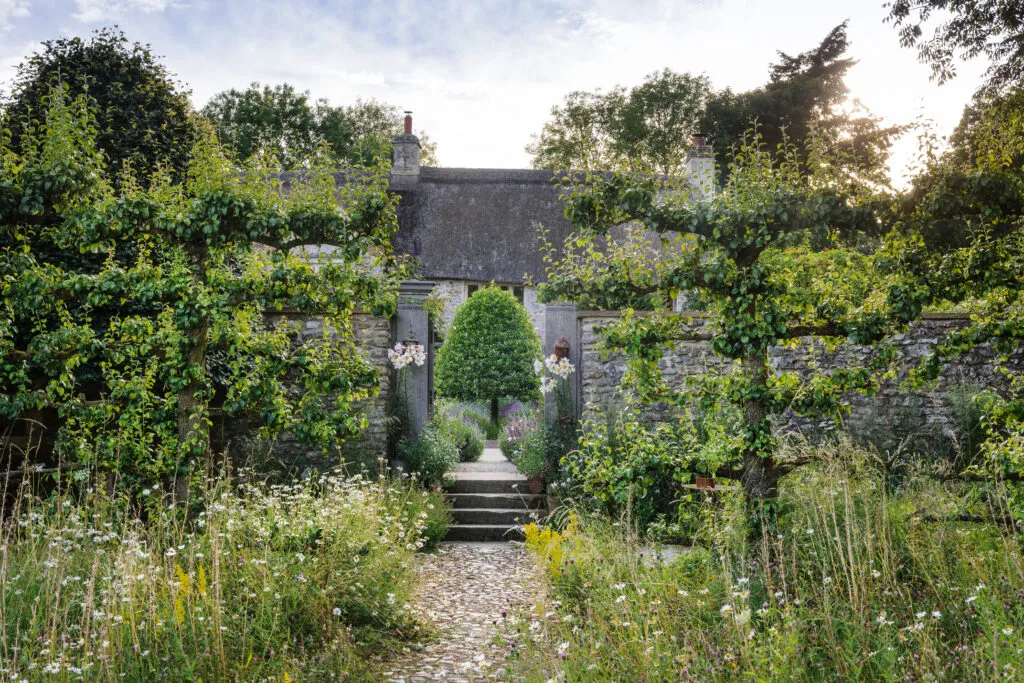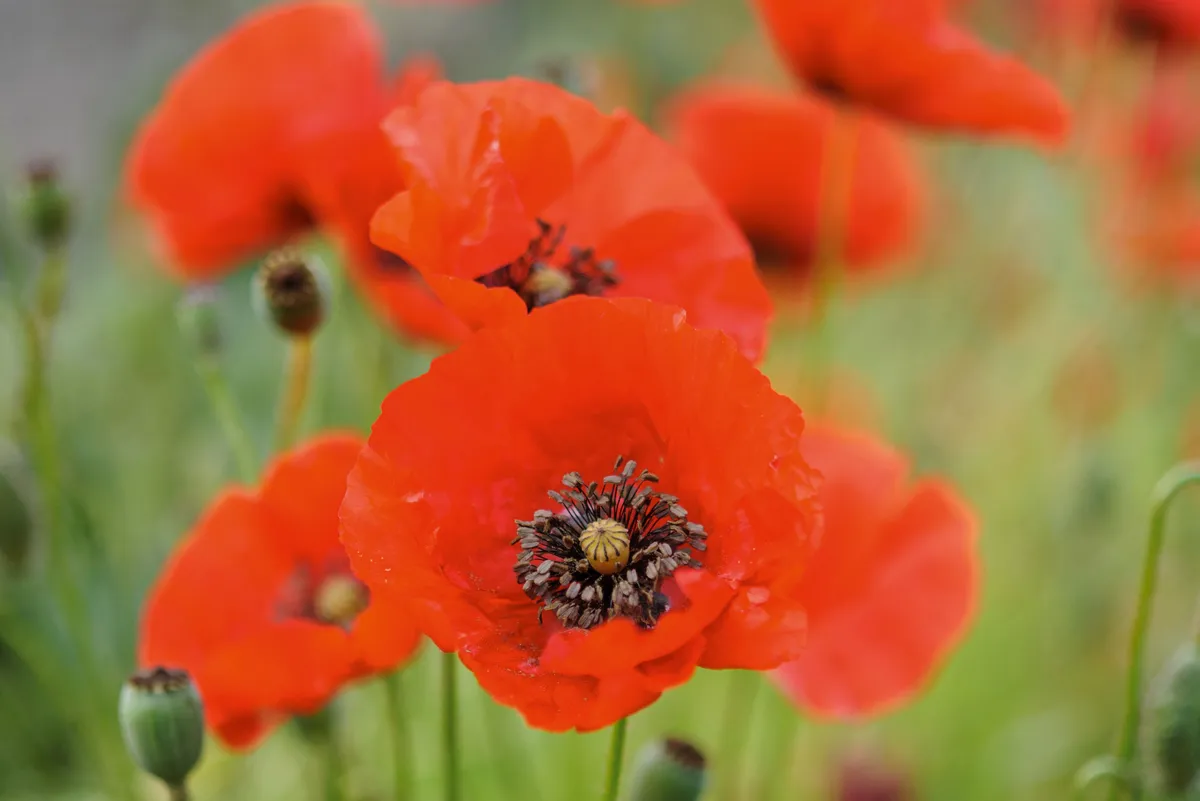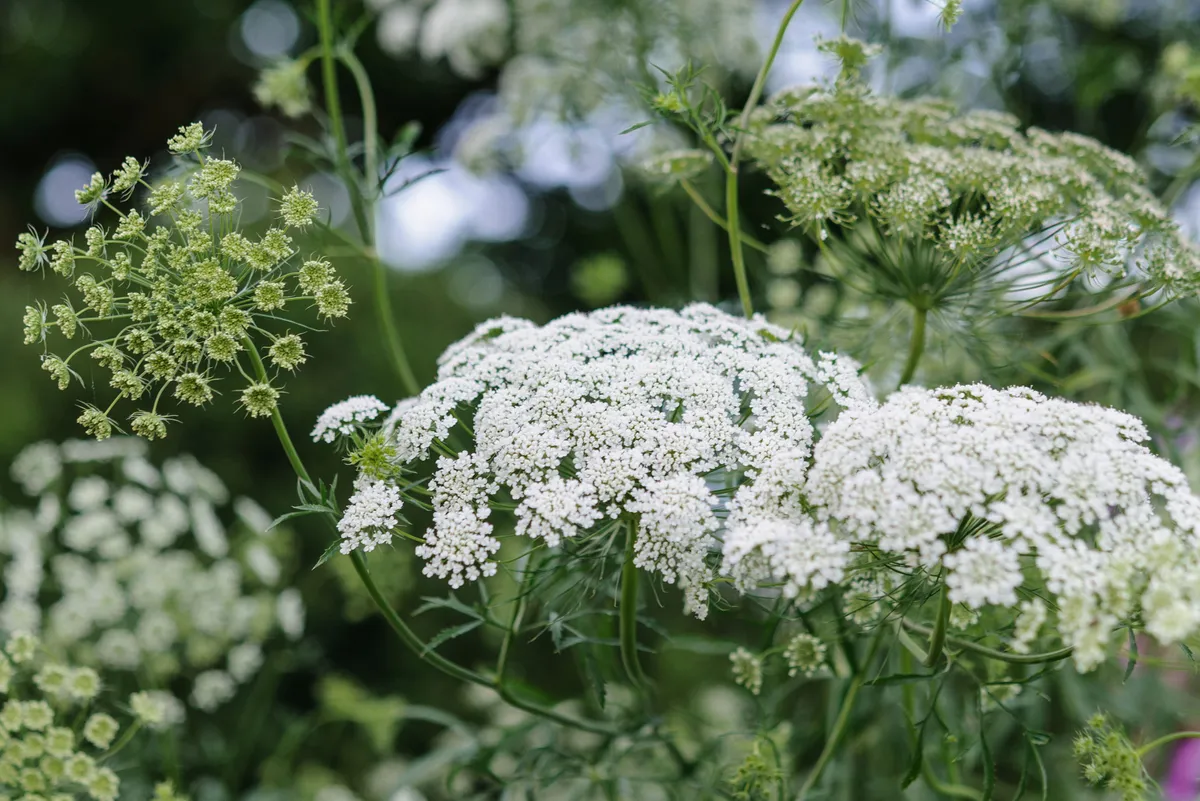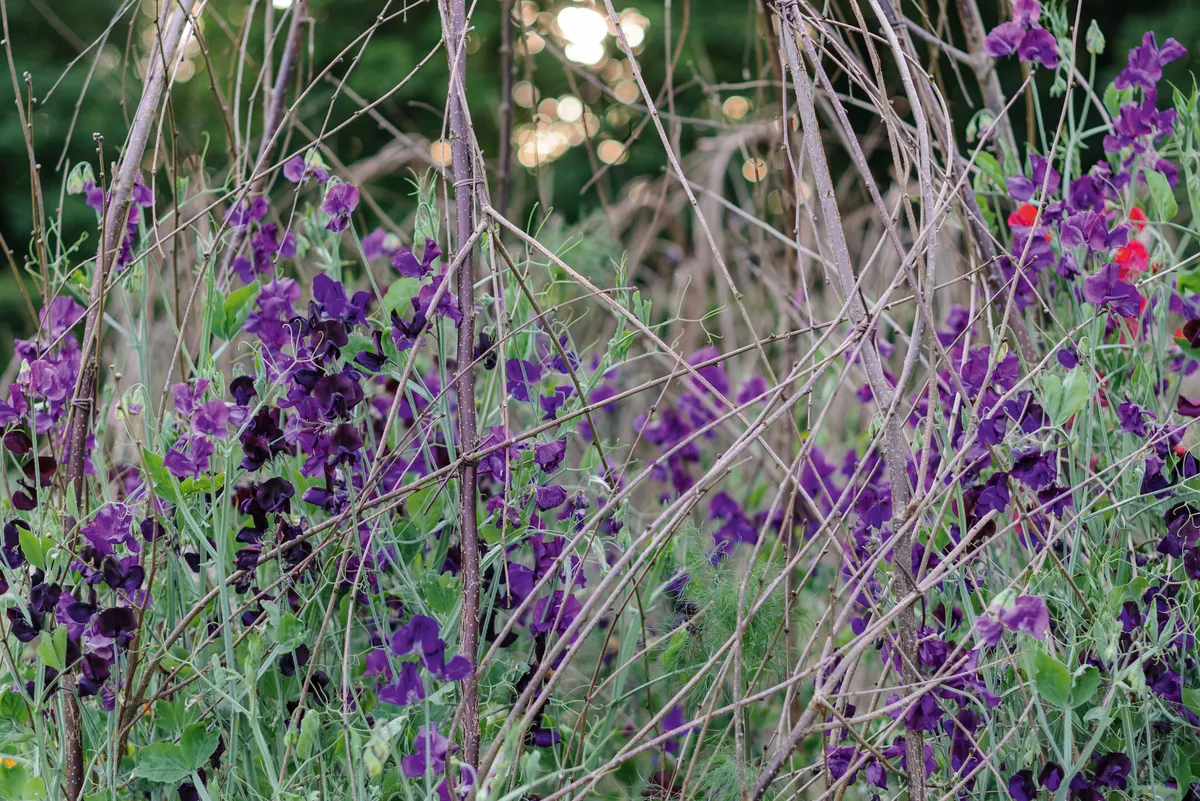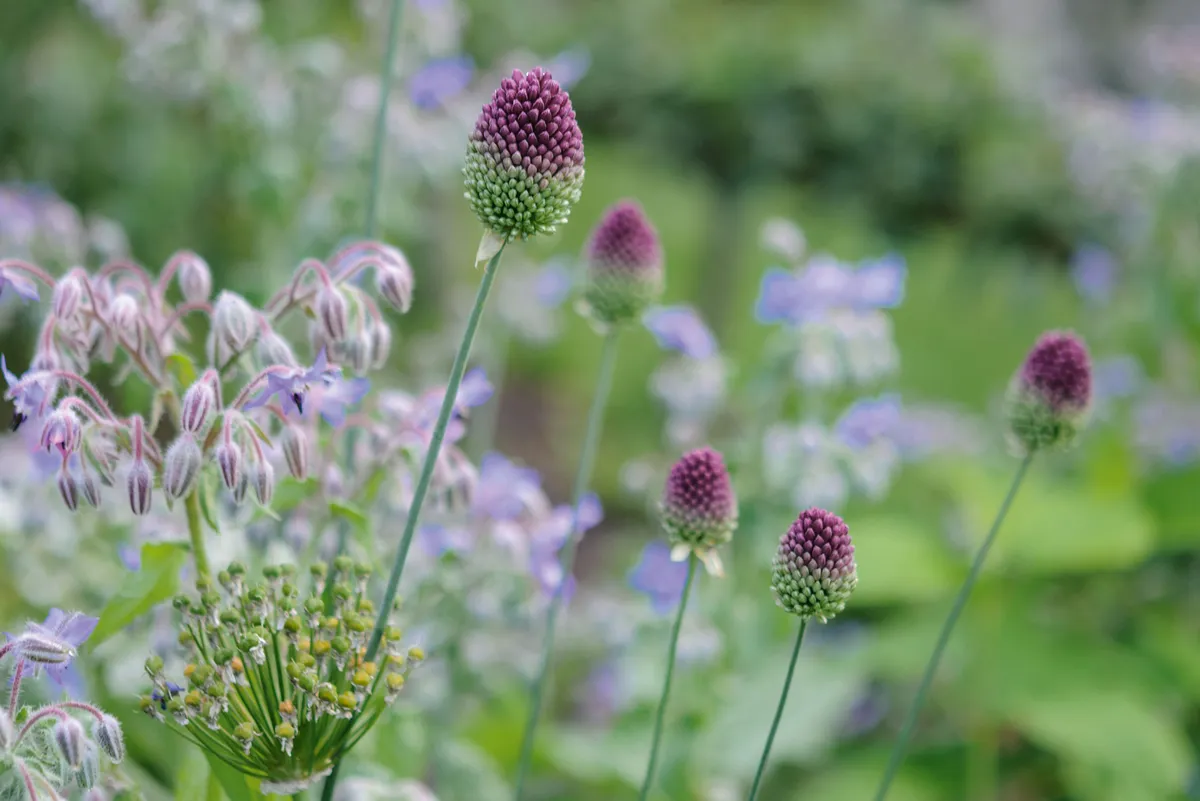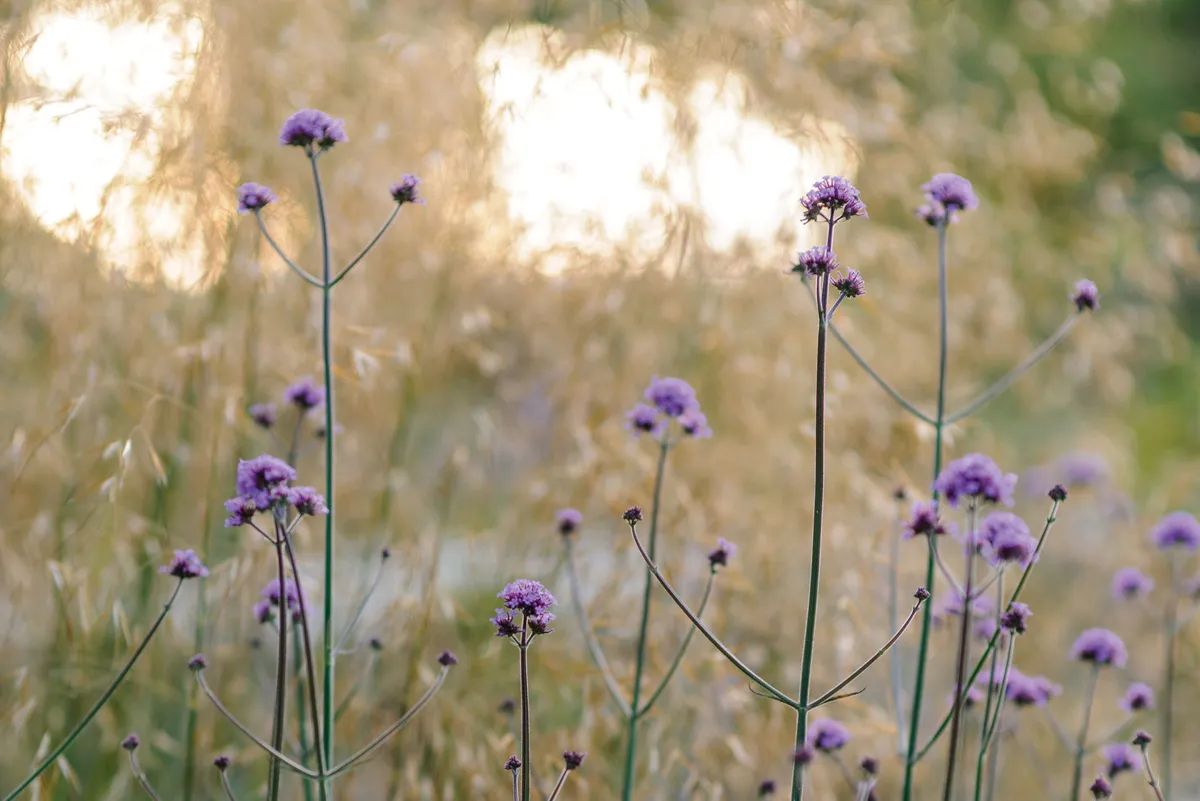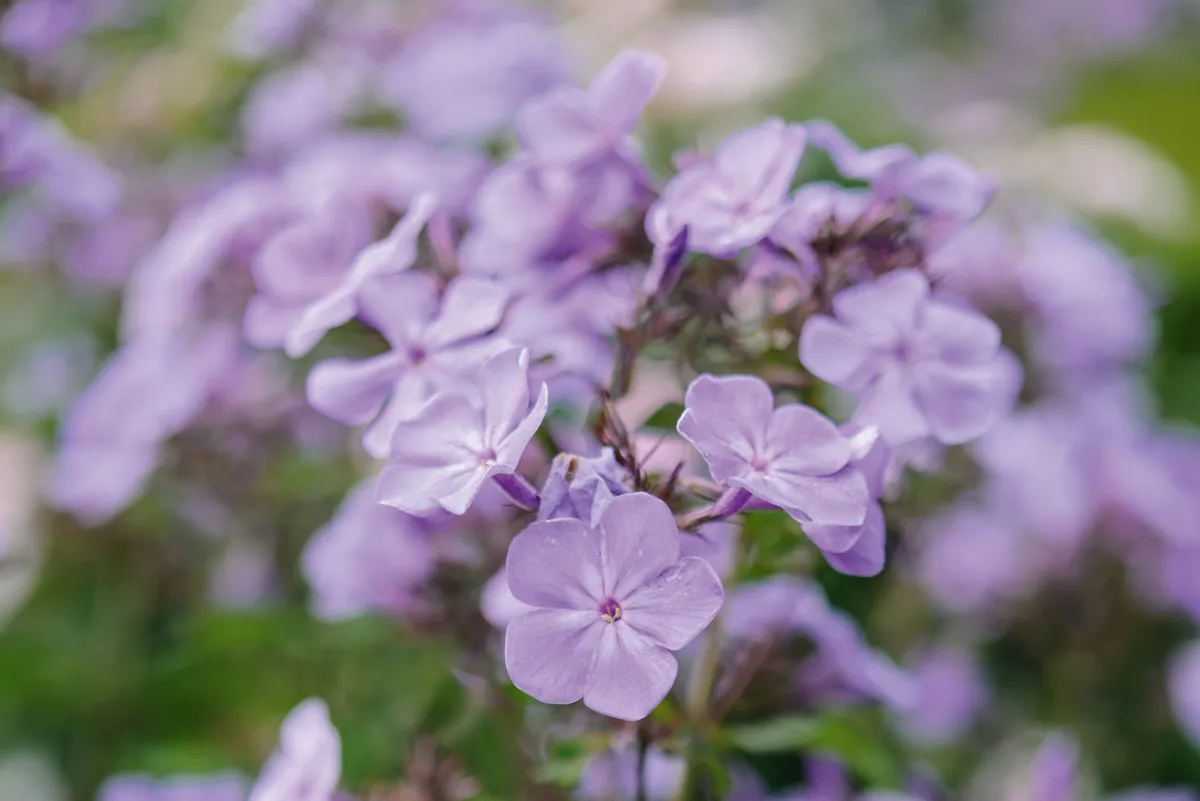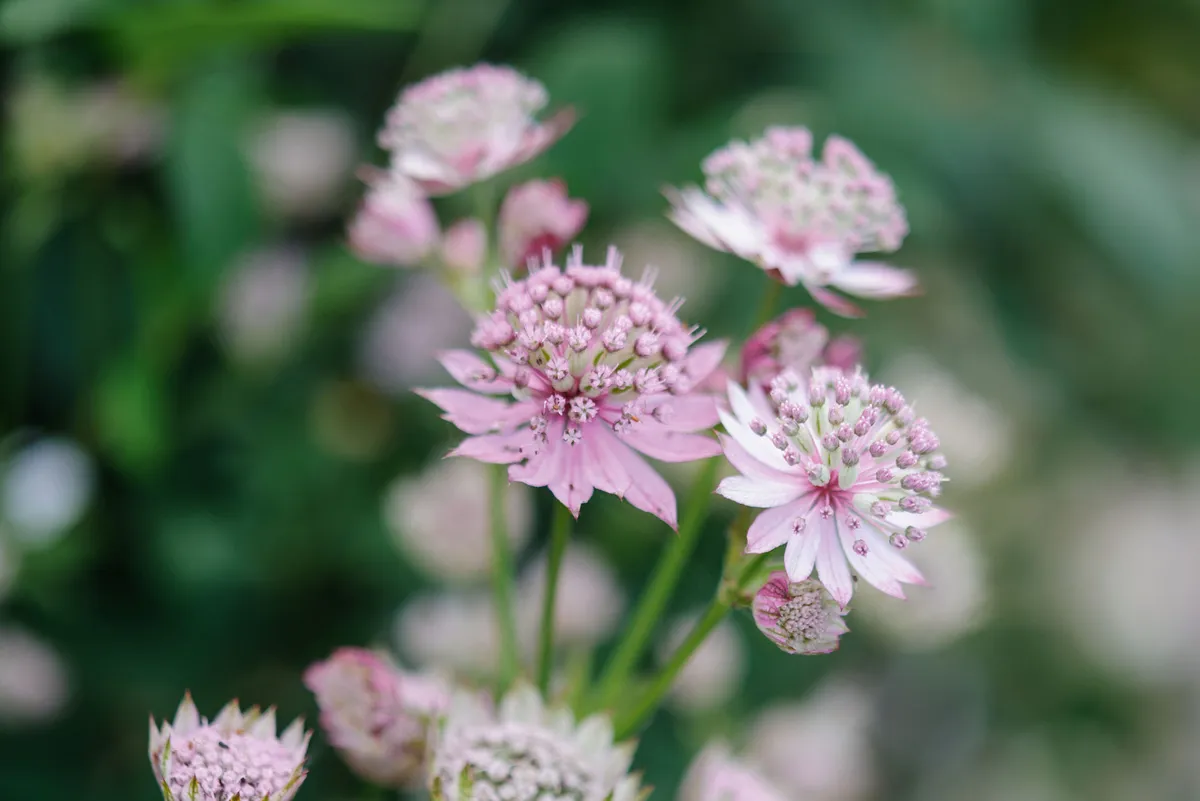At the end of a narrow lane, bordered by overgrown hedgerows that are thick with wildflowers and studded with large English oaks, beech and ash trees, is the ancient homestead of South Wood Farm.
Composed of a wonderful collection of chert stone buildings that sit snugly within a pocket of picturesque Devon countryside, South Wood Farm is surrounded by lush, rolling pasture speckled with trees and woodland.
You may also like
- A garden with a beautiful structure designed by Arne Maynard
- A rose-filled garden in Sussex
- Everything you need to know about designing a Chelsea garden
- Tickets, dates and information for Chelsea Flower Show
The main house, a medieval, cross-passage yeoman's house (with front and back doors opposite each other and connected via a corridor), dates from the 14th century, with later additions, most notably in 1655 when the house was extended.
IN BRIEF
- Name South Wood Farm.
- What An English flower garden designed by Arne Maynard.
- Where Devon.
- Size Five acres.
- Soil Clay with chert rock.
- Climate Warm and temperate, with high rainfall.
- Hardiness zone USDA 8.
South Wood Farm is the country home of Professor Clive Potter, who moved here in 2005. There was little garden here when he arrived so, in 2008, he invited designer Arne Maynard to help lay the foundations for the garden.
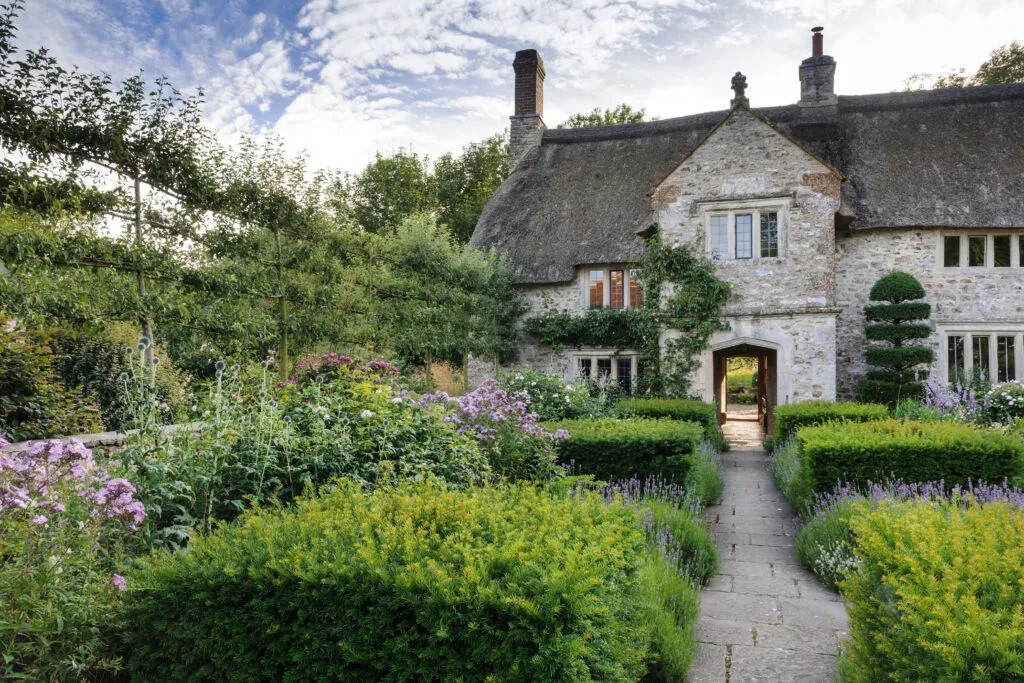
Clive refurbished the somewhat dilapidated outbuildings and walls that were once part of a dairy farm, while Arne restored the yard from modern concrete to small, chert stone cobbles – the same stone used for the buildings. Chert (a type of flint) is the local stone, and indeed, is often unearthed in the borders; its use in the yard binds the farmhouse and outbuildings to the garden seamlessly.
Arne Maynard’s skilful incorporation of the old buildings and walls into his design creates a wonderful atmosphere and makes the garden feel much more mature than it is.
The garden can be split into four main areas that wrap around the farmhouse: the Driveway, including the yard and meadows; the Front Courtyard, the jewel in the crown of South Wood; the Plum Orchard with its serpentine path; and a productive Kitchen Garden.
One of the most attractive features of the garden is the easy way it sits within the wider landscape. Meadows flow smoothly through the estate fencing, softening the divide between the farmland pasture and garden, and gradually build in intensity as they get closer to the main hub of the garden surrounding the house.
Head gardener Will Smithson has been managing the garden with Clive for the past five years. He explains the ‘borrowed view’ concept by saying “not only does the garden sit comfortably in the landscape, but the landscape is very much part of the garden”.
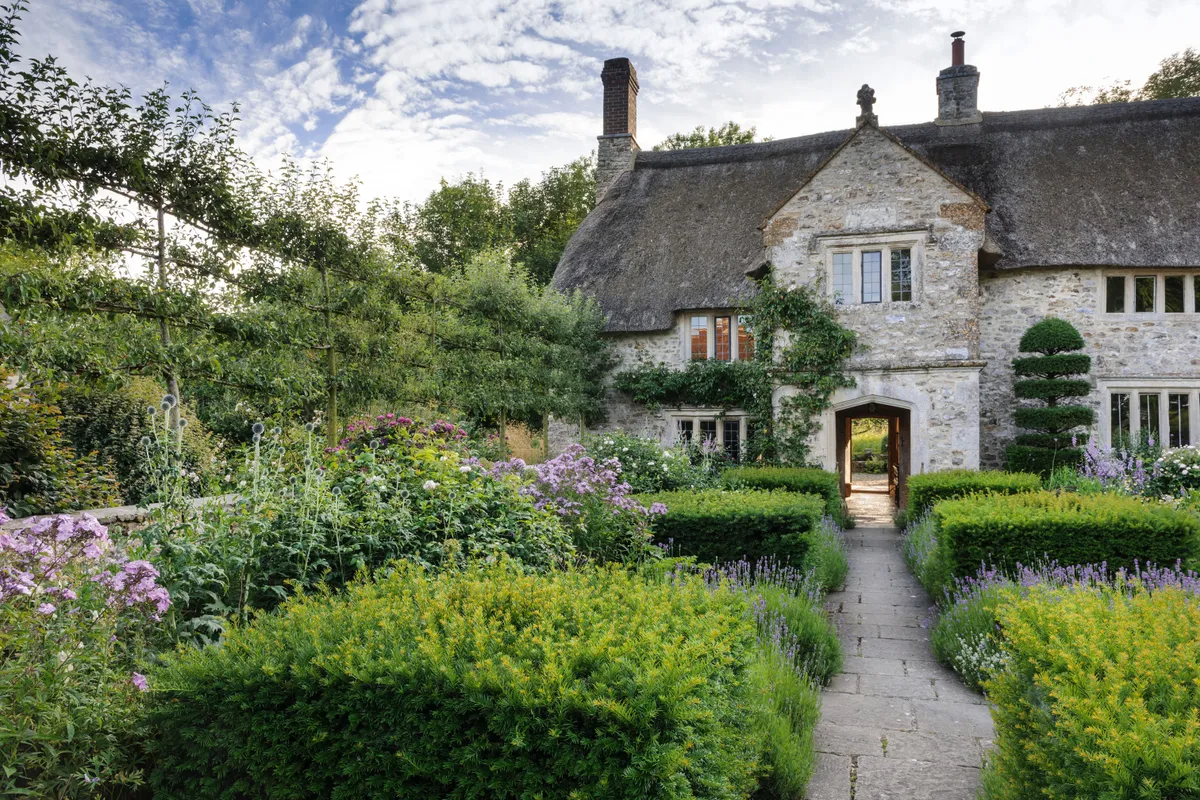
View from the Front Courtyard along the York path into the cross-passage corridor that connects the oldest 14th-century part of the house to the later extension carried out in 1655. The espalier crab apples connect the house with the outbuildings, and enclose the courtyard.
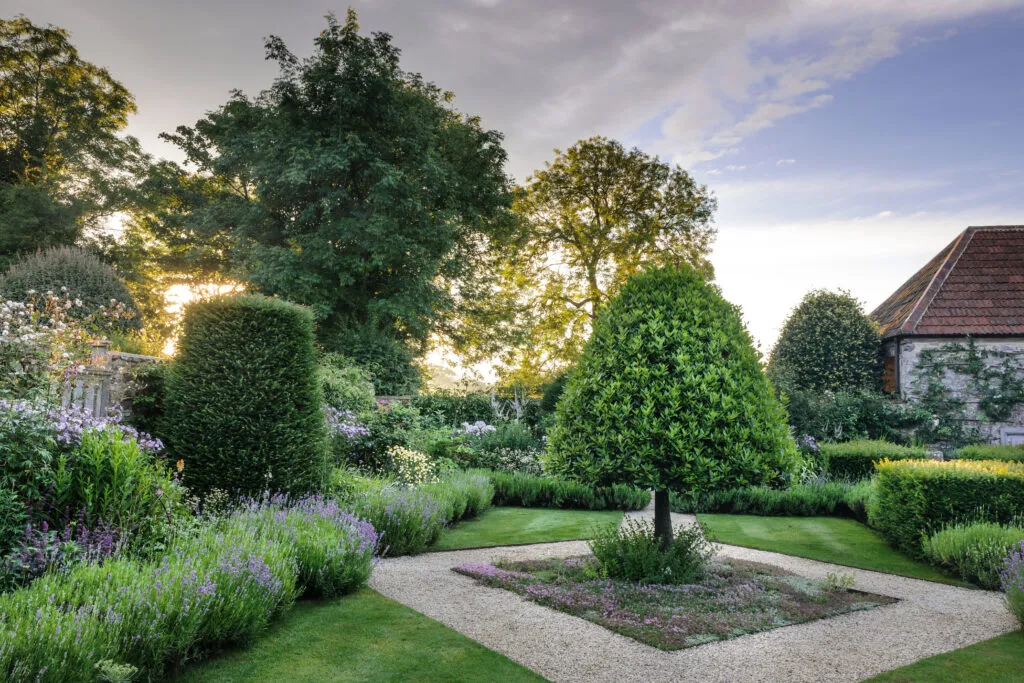
The clipped bay, planted by the previous owners in 1998, was retained and reshaped into a cone and now forms a focal point in the Front Courtyard garden. Four paths divide the garden into sections. The lavender that edges the beds has since been replaced with brick edging.
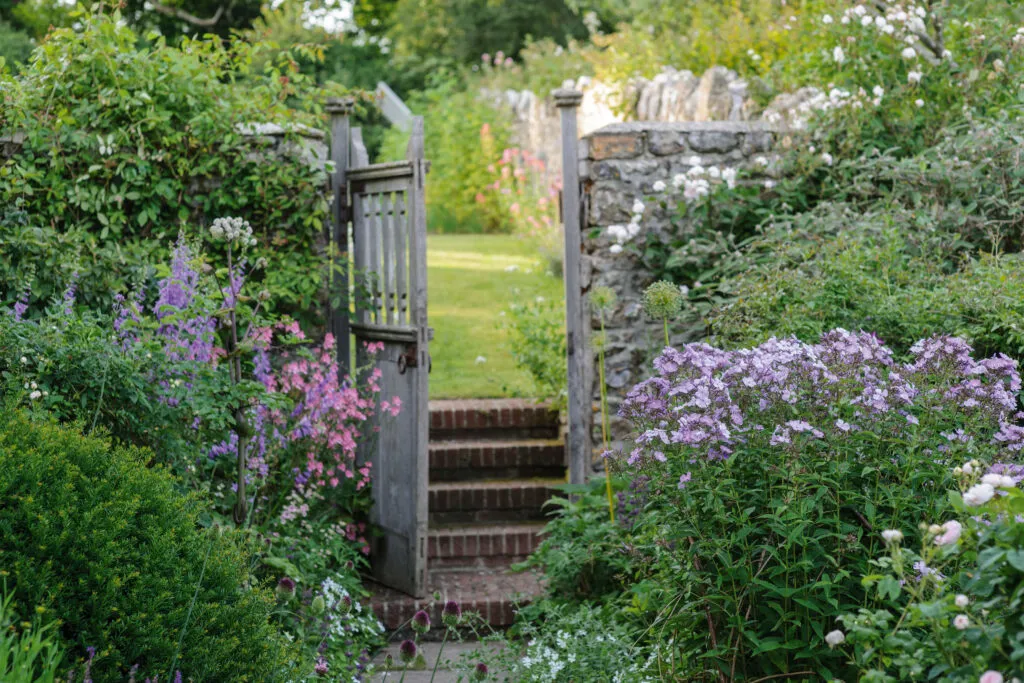
Brick steps lead to the Kitchen Garden. The pretty oak gate set into one of the original chert walls is a good example of Arne’s attention to detail.
The use of oak creates a direct link between the house and the garden, making the house sit more comfortably with the garden and vice versa.
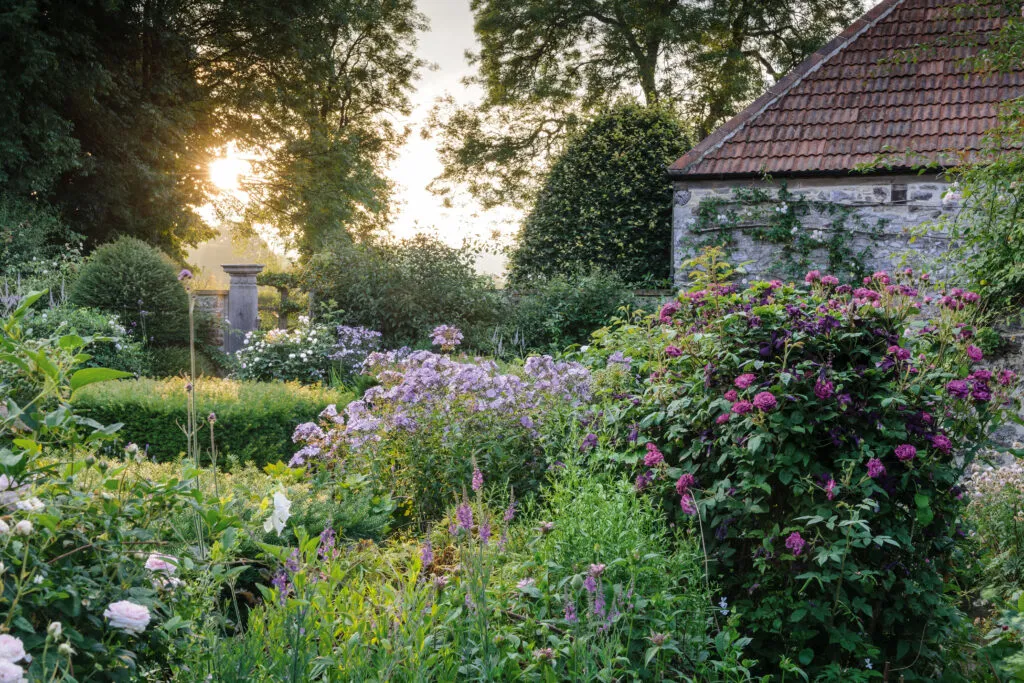
Head gardener Will Smithson pays particular attention to the roses, all of which are fastidiously trained. In the borders he attaches them to a skeleton of hazel. It is important to stake them carefully, as the area is subject to high winds.

At the base of the south-facing chert wall, Stipa gigantea and Verbena bonariensis combine with self-sowers Linaria purpurea ‘Canon Went’ and Verbascum blattaria f. albiflorum in airy displays. The hornbeam topiary is a nice full-stop at the end of the border, the curved top echoing the large oaks.

Understanding the importance of proportions and balance when designing a garden is crucial so that garden and house sit comfortably together. Here, looking across the Kitchen Garden, there is complete harmony between the two.
